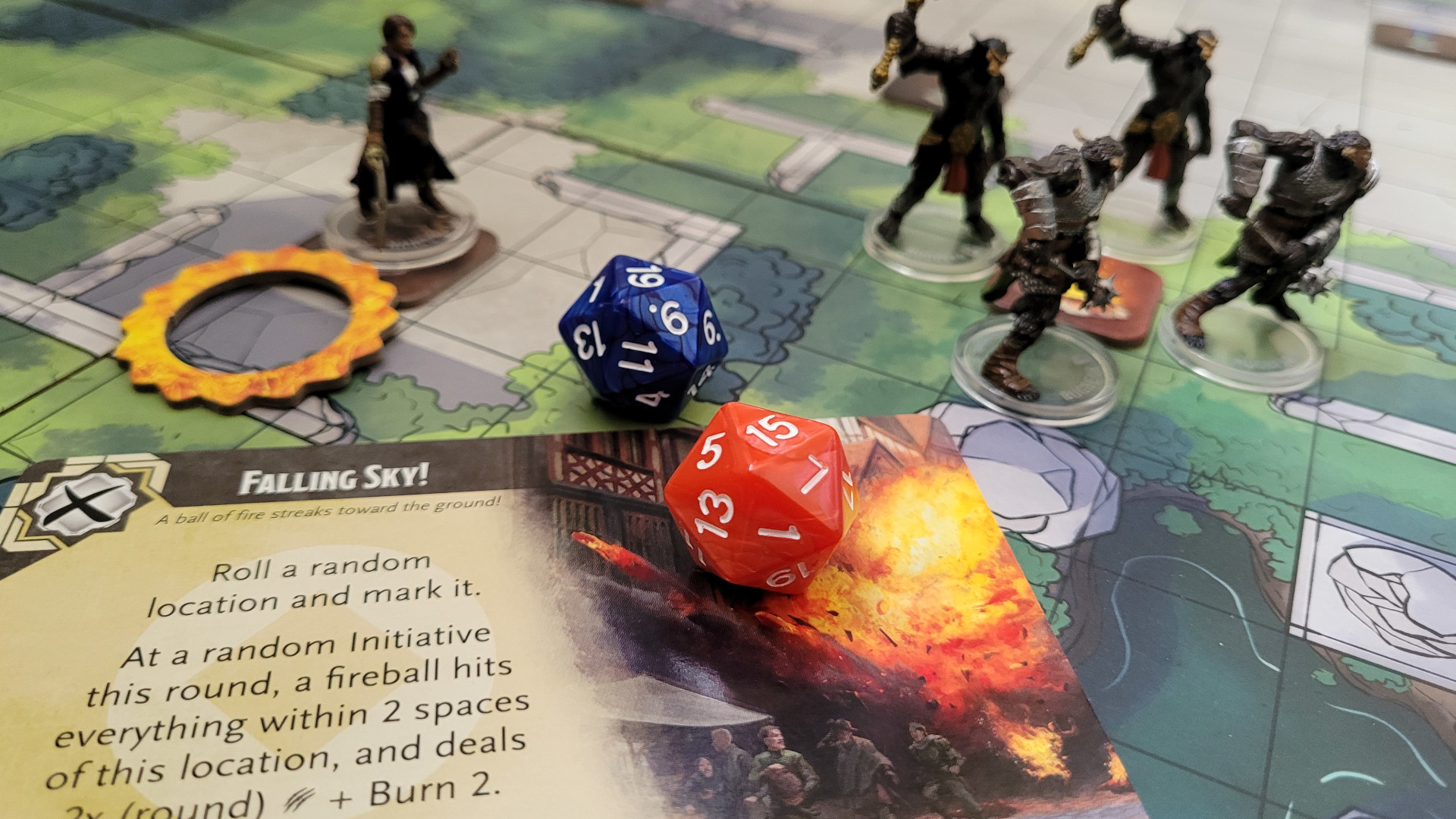
Famous roleplaying game Dungeons & Dragons has spawned dozens of board games over the years, and Trials of Tempus is just one in a long, storied line. Some of its most interesting predecessors were the Adventure System series, which saw players cooperating to defeat a randomly generated dungeon with simple AI-controlled foes. Now the core concepts of that system have reappeared here, with the surprise twist that they’re now competitive, as two teams of players race to complete classic goals from the best tabletop RPGs like looting treasure and killing monsters.
Trials of Tempus - features
Trials of Tempus comes in two different editions, with the premium option being twice the price of the standard. The only difference is that the miniatures in the premium edition come with standard pre-paint jobs to help them pop on your tabletop.
All the figures are from WizKid's D&D range, so if you’re a keen role-player, you can no doubt find use for them in your campaign or with Dungeons and Dragons books too.
Trials of Tempus - how it works
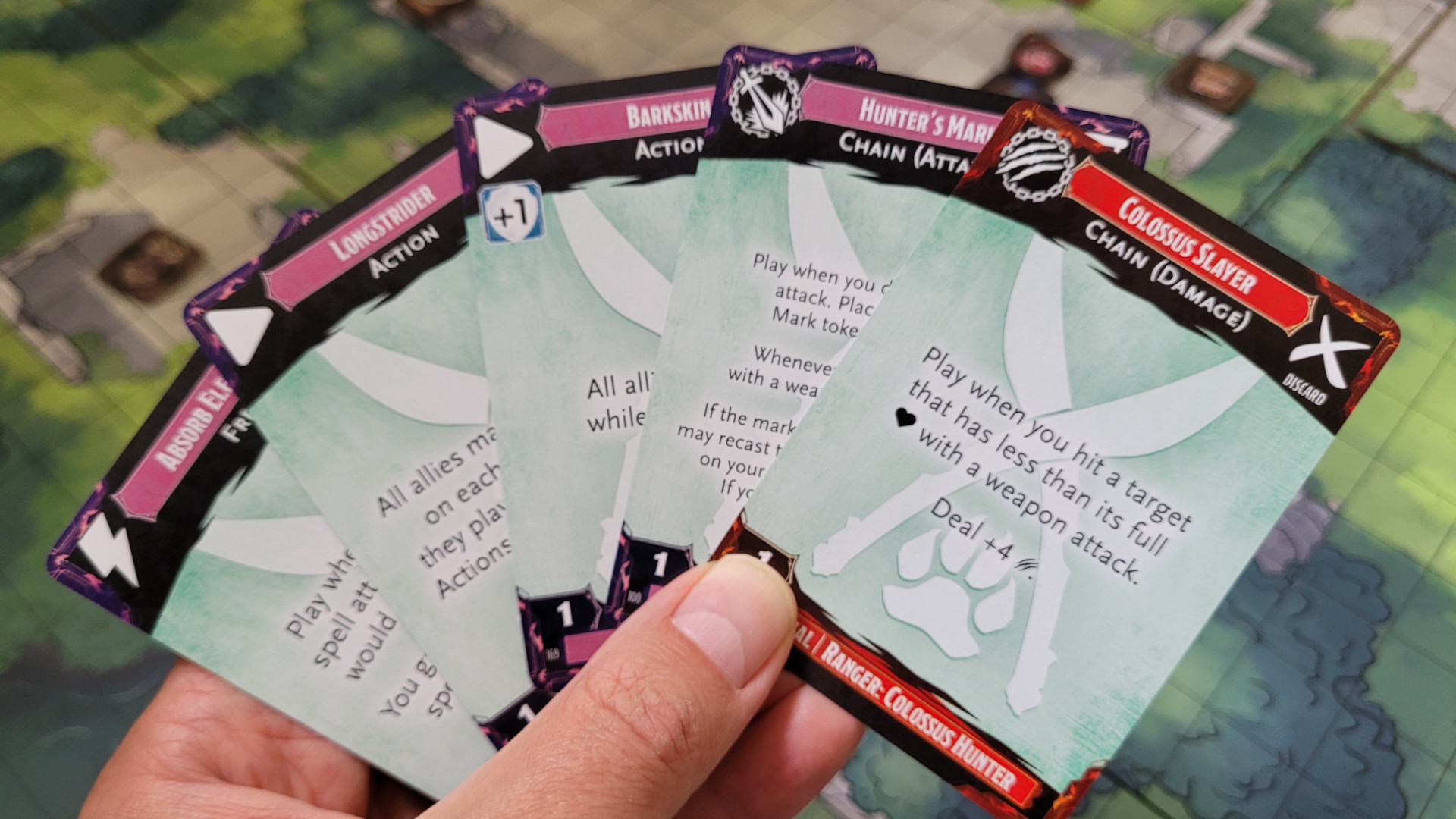
- Players use cards to take actions on the board like moving and attacking
- They gain points for achieving random objectives and stealing loot
- Once one team reaches 10 points, a powerful guardian appears to end the game
At its core, Trials of Tempus is reminiscent of Dungeons & Dragons: Onslaught. Players divide into two parties, controlling equal numbers of characters. Then you lay out the board tiles in a 3x3 grid, with a choice of two different fields to play on. (Both sides feature three loot chest tokens and four monster camps with figures.) Three random objectives are drawn at this point, and additional relevant tokens added to the board. Finally, each player takes it in turn to select a class, a subclass, and a character, each of which comes with a different set of cards they must locate and assemble.
However, setting all this up is a bit of a pain. Even if you just go with the recommended subclass and character choices for each class, which allows you to keep the cards together, it takes a while to find the right spots to put everything down on the huge board. That, in itself, doesn’t come with jigsaw edges to lock the tiles together, so there’s a tendency for them to drift apart as the action unfolds.
Packed with variety in terms of both play events and character builds, although this cuts both ways
Once you’re ready to rock, everyone draws some cards from their deck into their hand, and then a random event is revealed. These range from the humdrum (no combat that turn) to the anarchic, where every player piece is moved to a random position, with a variety of nasty monster and spell surprises mixed in for good measure. Everyone then rolls initiative on a twenty-sided dice to see what order they act in during the turn, with monsters going on ten.
The meat of the turn follows in initiative order, with each player getting two actions which essentially boil down to moving, interacting with objectives, or fighting. Your choices are dictated by your hand of cards, some of which are one-off card plays from your draw deck, and others permanent abilities which you can upgrade as your deck cycles. The former tend to be more powerful than the latter. You can also gain loot from treasure chests or defeating monsters, most of which increase your palette of available actions. Monster activations follow a simple AI routine printed on their card.
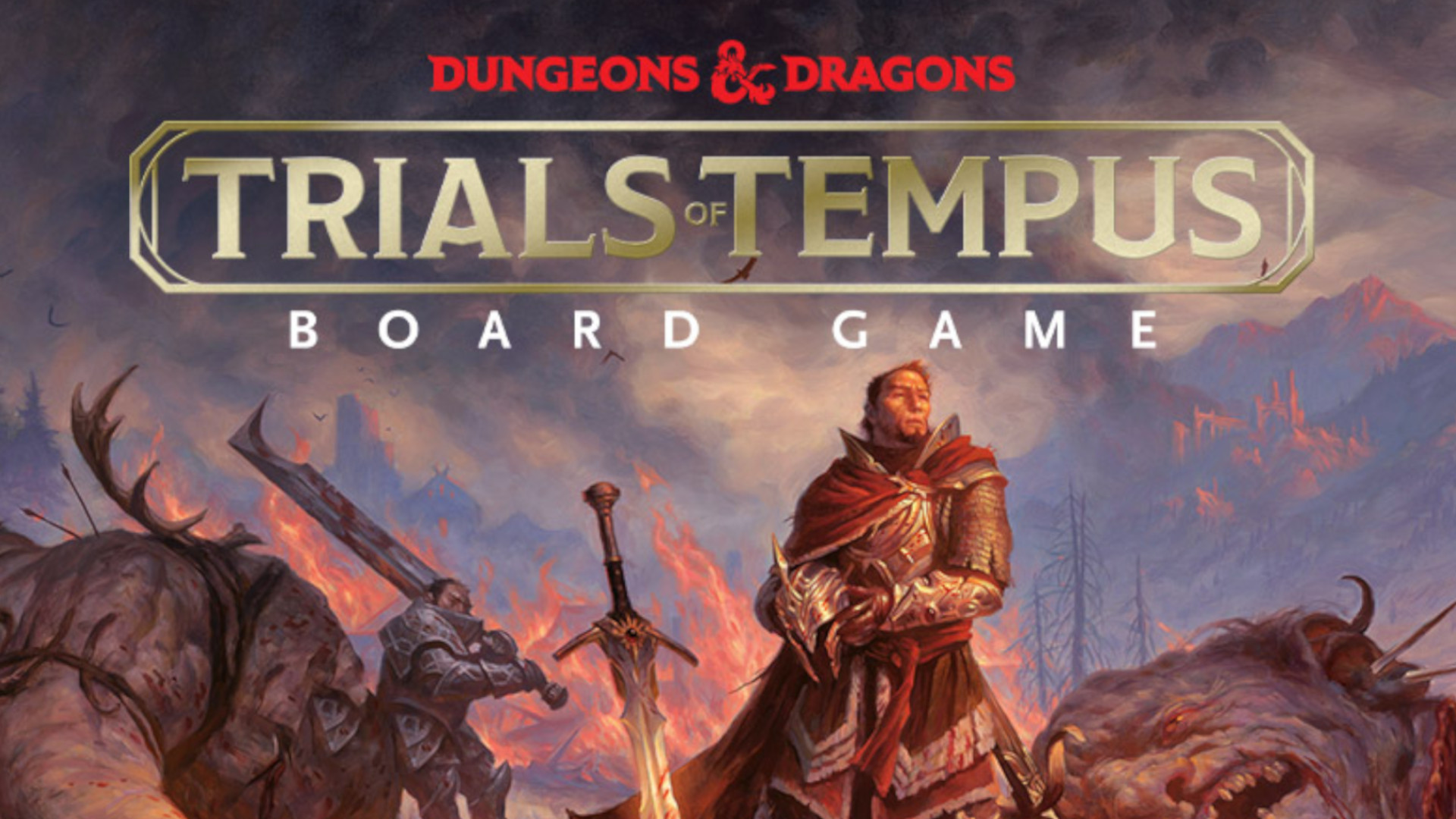
Trials of Tempus offers 25 models alongside nine map tiles, four d20 dice, 344 cards, a rulebook, and 333 tokens. In terms of figures, the suitably weighty box contains seven adventurers of varying lineages, four goblins, four kobolds, four bugbears, an ogre, an elder oblex, an iron golem, and a hill giant (some of which we've seen sold in other products). These come unpainted in the standard version, and painted in the premium equivalent.
Combat and skill checks are handled by the roll of a twenty-sided dice, with the outcomes of each range printed on the card. Hits against a target are modified by its damage reduction rating and deducted from its hit points, with zero marking a killing blow. While most combat is against monsters, there’s nothing to stop players from rival parties from killing each other. Indeed, it’s sometimes just too tempting to do so as dead characters drop any loot cards they were carrying.
Each loot in your possession gives your party a point, as does climbing each of the three stages of each of the three random objectives. Objectives generally involve killing things, exploring the board, or passing skills checks. Once one party hits the 10 point mark the trial guardian, a randomly drawn boss monster, is placed on the board. The game ends when it dies, and the party with the most points is the winner.
Trials of Tempus - gameplay
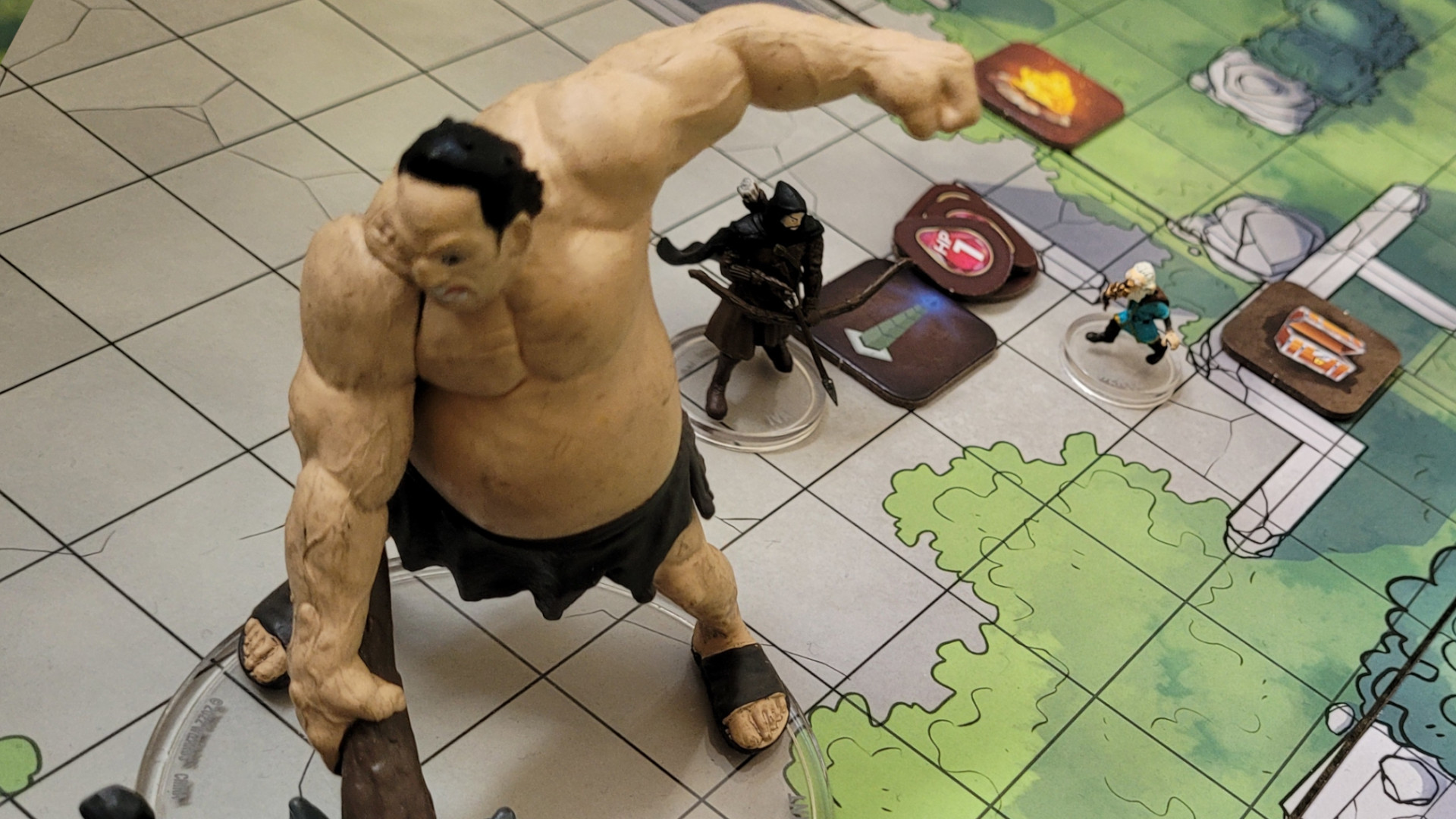
- Highly chaotic game, with dice galore and hugely impactful random events and goals
- Packed with variety in terms of both play events and character builds, although this cuts both ways
- Playing as two opposing teams is really fun, but you’ll need the find the player numbers
Let’s wind back to two points from the last section: this is a game where you win by reaching board locations and interacting with them, and also a game where every player piece can randomly get moved to a different square on the capricious whims of cards and dice. If that doesn’t sound like your idea of board game heaven, then run away from Trials of Tempus, fast.
Still here? Good. That suggests you’re the kind of gamer who’ll ride the random rollercoaster to hell just for the sheer narrative of it, and, if you are, then this game should prove a blast.
Right off the bat, you’re spoiled for choice in terms of causing chaos. The board setups are positioned so that you can make a start on any of the three objectives by your second turn. Are you better off splitting up to tackle them, or barging en masse to the nearest and hoping to turn it faster by weight of numbers? The answer will depend on what kind of character options you’ve chosen during setup, but after you’ve got the first couple of points on the board, it really is anything goes out there.
Throw in the fact you’re encouraged to attack, disadvantage, steal from, and generally bully the other party, and you’ve got the most delicious soup of interaction
By this time, everyone will probably be closing in on the central area of the board and monsters will have begun to activate and move around. In a neat twist, they’re moved by the enemy party of the nearest player piece that they’re targeting to ensure they cause maximum carnage. And this is where the various player powers really come into their own. Wizards have area-effect spells that can wipe out crowds of the monsters and the occasional unlucky player in one blast. Rogues can swipe loot directly out of other player’s hands. Fighters can literally push other models around. And don’t forget that there are nine classes, each of which has two subclass and character options for a wide variety of builds to explore.
There’s also enormous variety in the quests and events, to the point where games with the s can play out in completely different ways. And that’s good for replay values, but all this variety does come with a downside. Your hand limit is five cards, you draw two per turn, plus you’ll have five 'base' actions that are always in the mix. Often, your palette of decisions thus ranges across twelve choices, some text-heavy. That’s a lot to internalise and sort though in your head, especially when you’re new to the game. It’ll help if you’re familiar with Dungeons & Dragons itself, but even then the mechanics are different enough to wrong-foot you, especially with all random events and quests thrown into the mix.
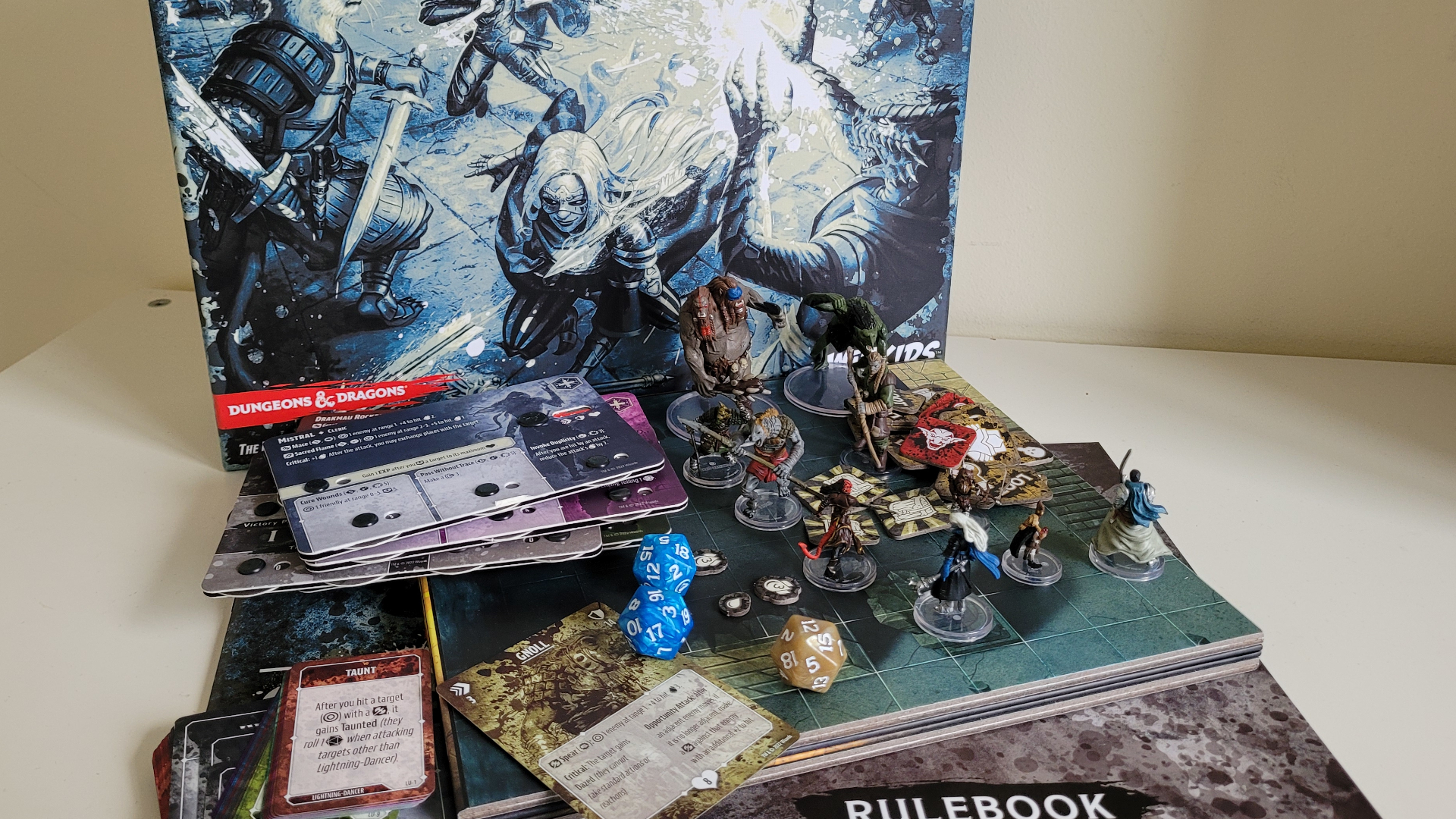
Unlike the Adventure Series, Trials of Tempus doesn't feature an overarching campaign - it's an arena battle that's all about combat. And even though it shares a lot of features with Onslaught (opposing teams, classes with unique skills, and a separate group of monsters), this one feels more random with abilities dictated by the cards in your hand. It also has a more rigid structure rather than being scenario-driven.
On the plus side, you do have plenty of options to deal with all the chaos that the game is going to throw at you. Your character also has a special 'interaction' power that can be used to boost the actions of your teammates. And this is where Trials of Tempus really begins to shine, as you work together with the rest of your party to mine the board for points. No options are ever obvious, and there are normally several sources of scoring that are viable at any given moment. You can come to some agreed plan, or all strike out madly doing your own thing, and the game is still a blast either way. Throw in the fact you’re encouraged to attack, disadvantage, steal from, and generally bully the other party, and you’ve got the most delicious soup of interaction to add to the general sense of mad entropy.
Of course, that means to get the full effect, you need two well-matched parties of players. As a result, the game shines best with exactly six players, and also works well with four or eight. That might be a difficult ask for some players, and prevent the game from getting the table time it needs to explore all that variety over repeat plays. There’s also the relatively long play time to consider. When one side hits the 10 point barrier and brings the guardian into play the game isn’t over: in fact, it’s in their opponent’s interest to keep the guardian alive while they grub up some additional points. This can make the endgame drag.
Should you buy Trials of Tempus?
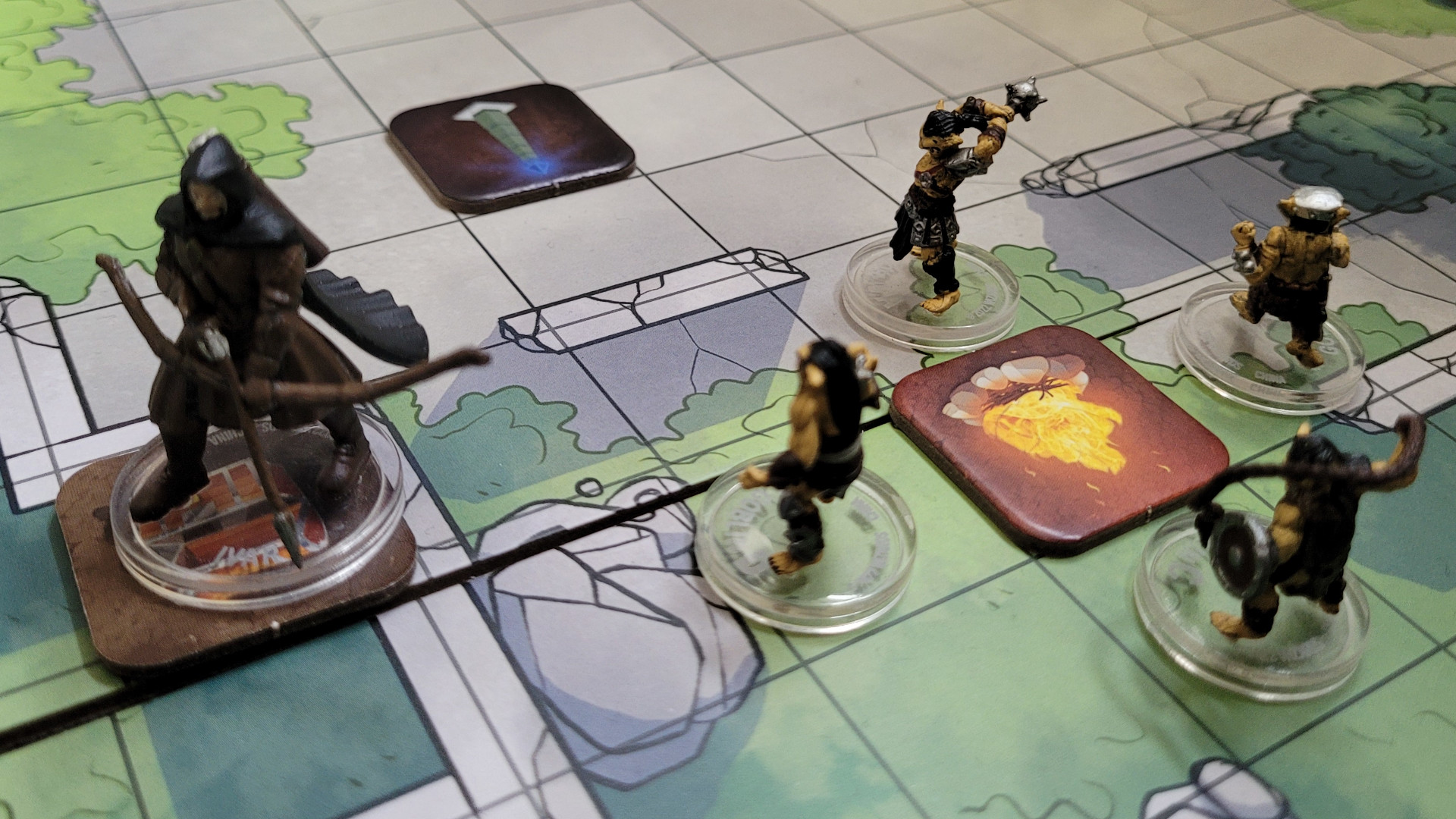
Trials of Tempus is a big ask in every way; it’s a big box, with a big play time, a big player count, and a big price tag to match. But if the core premise of a madcap competition of two parties trying to do what adventuring parties do best appeals, and you can meet the ask, then you’re going to have a grand old time with the contents. It’s faithful to the source material and is packed with content to ensure each outing will be full of twists and turns to surprise and delight you, so long as you don’t get frustrated by the random ride. Best of all, the team setup is unusual and provides the best thrills of both competition and cooperation alongside one another.
Buy it if...
Don't buy it if...
How we tested Trails of Tempus
I ran through multiple sessions of Trials of Tempus with numerous classes (not to mention characters) to get a sense for how they all worked. I also paid particular attention to how the experience differed with different player-counts. For more information on our process, check out our guide on how we test.
This copy of the game was provided by the publisher.
For more team-based experiences, check out these must-have cooperative board games.







